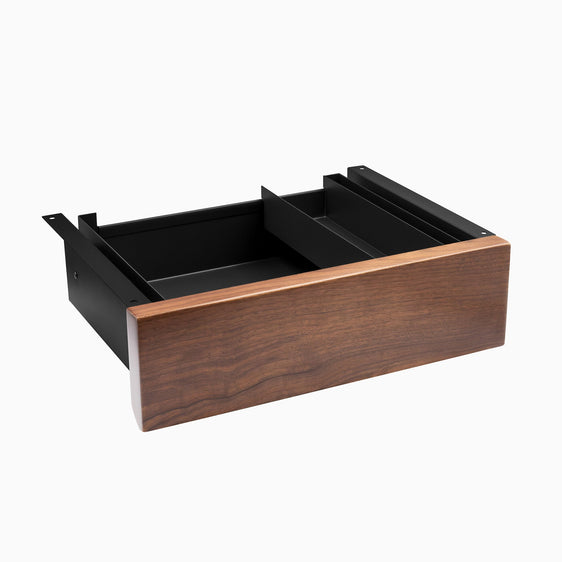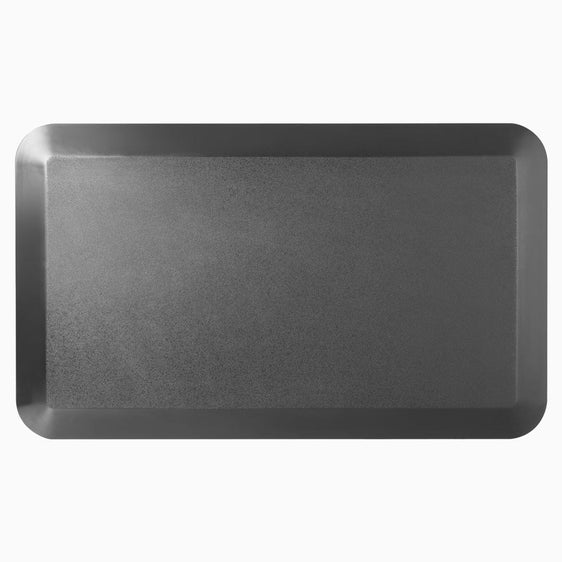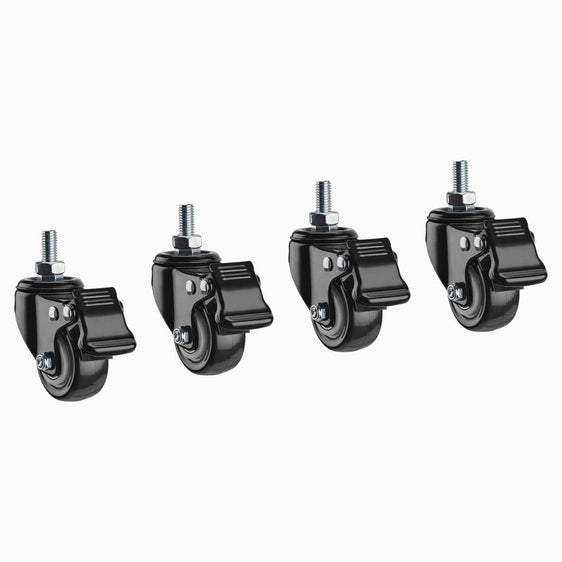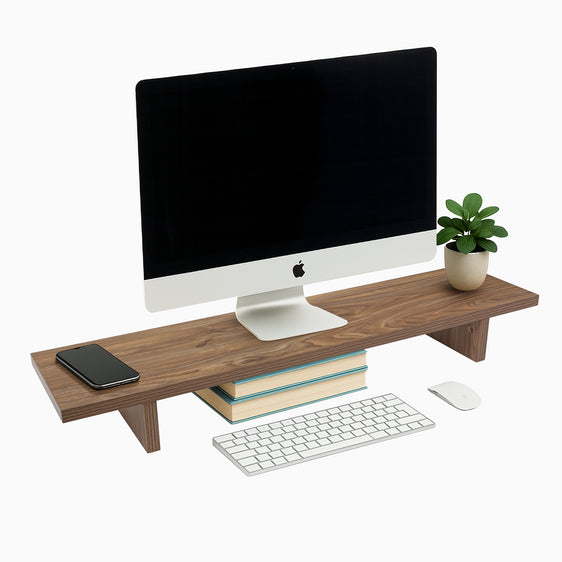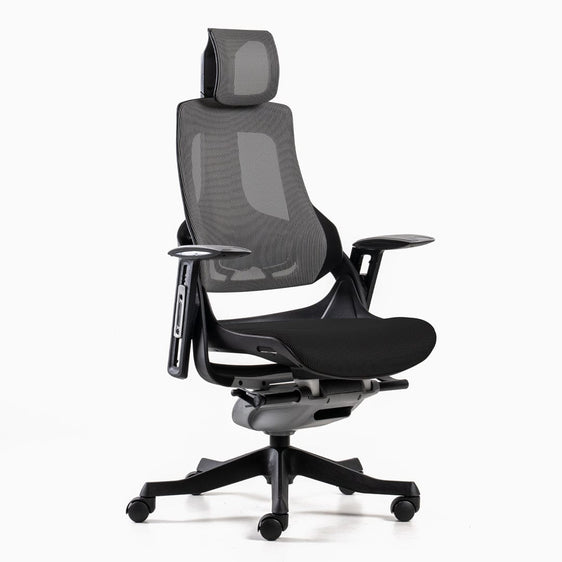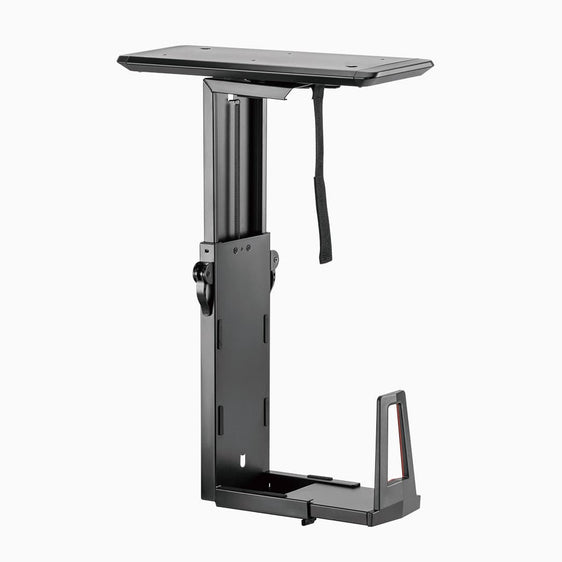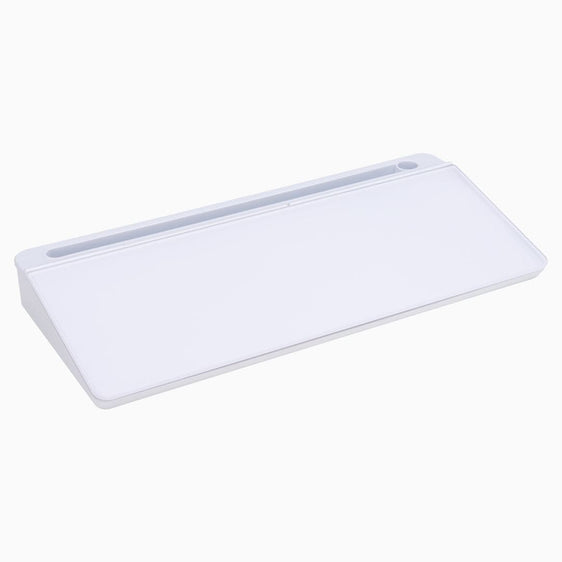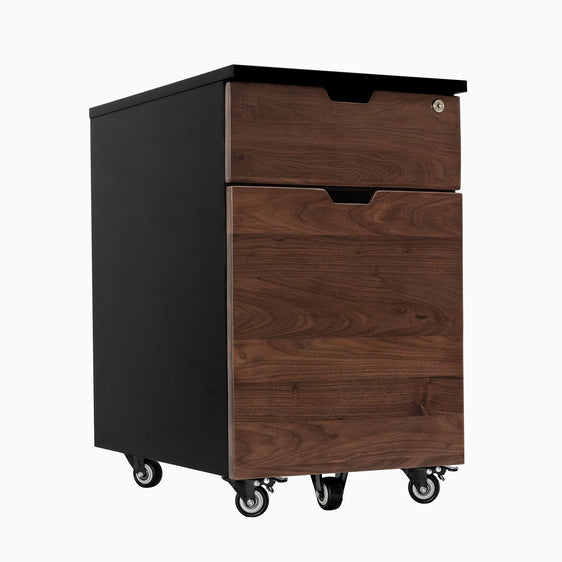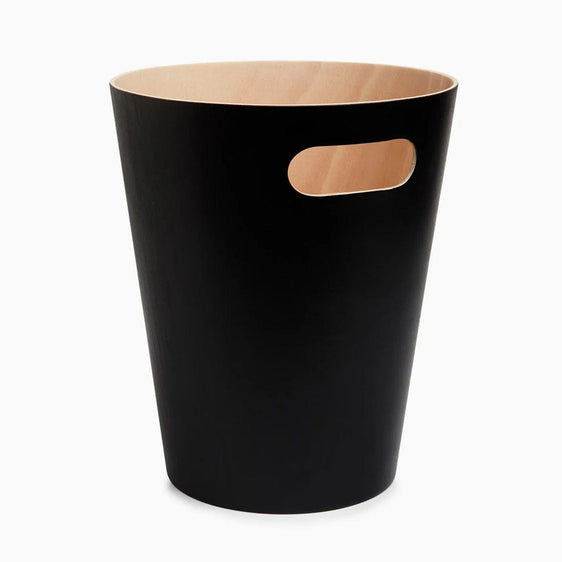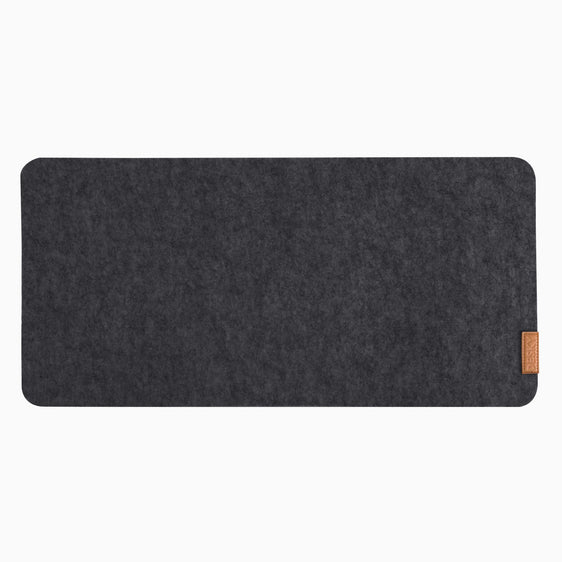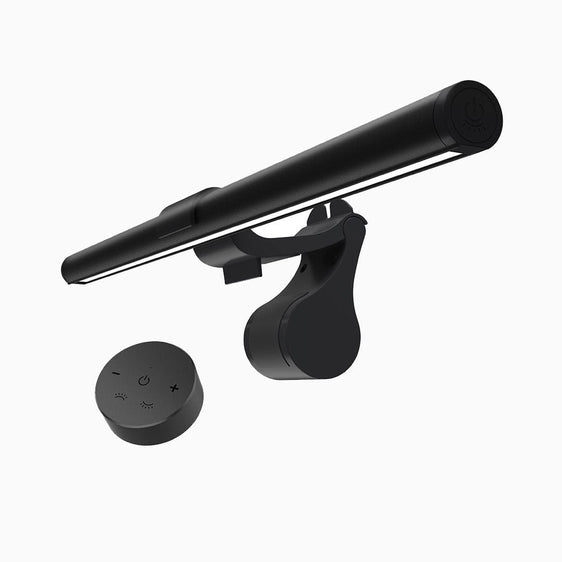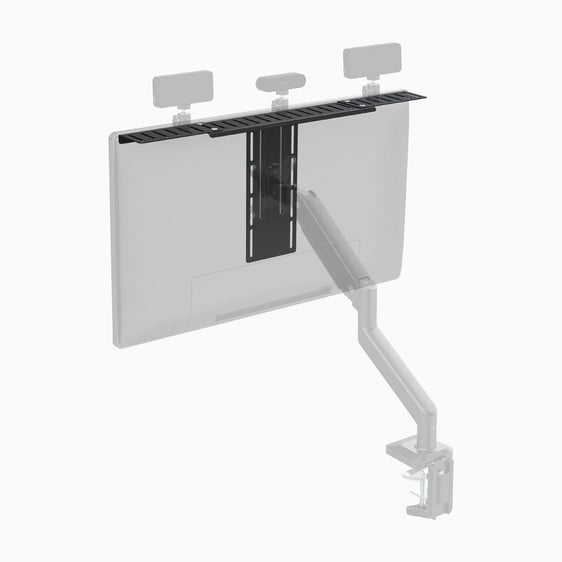
News
Standing Desk vs Kneeling Chair: Which Is Better?
Hayden AdamsAre Standing Desks Better For You?
A standing desk is any desk at a height that allows you to stand while working. There are a couple of varieties of a standing desk; fixed, power lift, manual lift, and desk riser.
A fixed-level standing desk is a desk built to be permanently at standing height. There is no option to raise or lower it. Some models may give you a couple of centimeters of wiggle room to account for your height. These standing desks are best for those who want to always be standing. They are also a good option for a treadmill desk.
{{ spec_dual_softwood_desk }}
Electric standing desks are desks that can lift and lower with the touch of a button. These desks come equipped with a small motor that moves the desk for you, and some even come with memory settings to accommodate different users. Similar to this is the manual adjustment standing desk, which uses a crank to raise or lower the desk to the desired standing height. These desks are ideal for those who wish to switch between standing and sitting throughout the day. Pairing a standing desk with an ergonomic kneeling chair or a kneeling desk chair provides a versatile setup for improved posture and comfort during long work hours.
A desk riser or standing desk converter is a desk accessory that sits on top of your current desk's surface. You can lift the top of a standing desk converter to create an elevated surface for standing while retaining your existing desk. For those who prefer a more dynamic seating option, a kneeling office chair can complement this setup, offering better spinal alignment and reduced back strain. This combination is ideal for those seeking the best kneeling chair and a budget-friendly way to enhance their ergonomic workspace without replacing all their furniture.
{{ spec_zero_desk_converter }}
There are a few benefits to a standing desk. One minor improvement is that standing burns slightly more calories than sitting (88 calories per hour standing as opposed to 80 calories an hour for sitting).
When sitting, the muscles in your back can tighten over time. This effect is exacerbated by bad posture as well. Standing desks have also been shown to improve back pain.
Lastly, many standing desk users have reported that standing tends to improve productivity.

Sit to stand desks are not the be-all-end-all of the ergonomic desks, however. If one stands for long periods, they may find they have pain in their legs and feet. Standing for extended periods can also increase the likelihood of varicose veins. Secondly, standing desks are not perfect for every task. There are some tasks, such as drawing, where it may be easier to be seated at a traditional desk or drafting table rather than sitting.
To reap the full benefits of a standing desk, be sure to be standing with a straight back, with your head, neck, and spine in alignment. It is also beneficial to be wearing comfortable shoes and have an anti-fatigue mat underneath you.
Is Kneeling at a Desk Better than Standing?
When it comes to a standing desk vs kneeling chair, both kneeling and standing have their separate benefits that they are best suited for. One is not necessarily better than the other. There are also some ways that the two share similar benefits.
{{ spec_kneel_chair }}
Both the kneeling chair and standing desk help to alleviate back pain or at least lessen the severity of it. Kneeling chairs and traditional chairs may not seem that different at first, but it does make a difference. When it comes to your back, kneeling encourages proper posture better than sitting. While you are using a kneeling chair, your pelvis is pushed forward, creating a more natural curve to your spine in comparison to sitting. Kneeling also distributes your body weight more evenly throughout your hips and legs, rather than all the tension placed on your hips and spine.
Thanks to the angle your legs make while using a kneeling chair, studies have shown improvements in blood circulation. When sitting in a regular chair, your legs create a 90-degree angle with your torso, which can compress important veins and arteries. One of the key kneeling chair benefits is that it allows your legs to rest at a 110-degree angle, opening up the hips and promoting better blood flow.
A final benefit of kneeling chair use is its positive effect on internal organs. Traditional sitting compresses the body, pushing organs together, which can slow digestion and restrict lung capacity. By encouraging good posture and opening up the hips, the kneeling chair reduces this compression, allowing your organs to function more efficiently. This contributes to overall health and well-being. If you're wondering, are kneeling chairs good for you, the answer is yes—they offer significant benefits for circulation, posture, and even organ function, making them a valuable addition to ergonomic workspaces. A similar benefit is seen in standing.
Kneeling may be better if you are prone to varicose veins or if you have an injury in your legs or feet. Kneeling chairs allow you to keep a straight posture without the strain of standing all day. Standing for too long can begin to have a detrimental effect.
Kneeling chairs are not perfect, however. For one, you are less mobile in a kneeling chair. Your posture and positioning are pretty much set without much variation available to you. This may make it difficult to use a kneeling chair for long periods, especially when you are just starting. That is why it is generally recommended to start small in a kneeling chair, only using it for a few minutes a day and gradually increasing your time as the days and weeks go by. If you are the type that needs to fidget to think, you might find more benefit in swapping between a regular chair and a kneeling chair.
Due to the layout of a kneeling chair, there is also more pressure placed on your shins. This may cause some pain after long periods.
Lastly, these chairs can be difficult to use, especially if you have trouble with balance or mobility. If you're not sure, it may be a good idea to test out a kneeling chair in a store with the help of a friend before purchasing.

One benefit of a kneeling chair over a standing desk is that once you are used to a kneeling chair, it is possible to remain in a kneeling chair for much of the day without much detrimental effect. This is particularly true for rocking kneeling chairs. These chairs have rounded bottoms that allow the user to gently rock while sitting. Thanks to this constant movement, in conjunction with the angles that a kneeling chair holds the body, you won’t encounter the same issues with your legs as you would while standing, or with your back and hips as you would while sitting.
Kneeling Chairs: Better for hips?
Hips play a pivotal role in body positioning and movement. The constricting effect of traditional chairs on hip flexor muscles is a reality many of us live with.
Kneeling chairs help to foster a more open hip angle. An ergonomic solution that induces a gentle stretch and loosens up tight hip flexor muscles, culminating in greater comfort.
What Does A Kneeling Chair Do?
A kneeling chair is any chair that puts your body in a kneeling-like position while seated. They come in many different designs, from rocking to rolling to stationary.
The main design of a kneeling chair includes an angled cushion that you sit on and a cushioned area in front of you where you rest your knees and shins.
The seated section of the kneeling chair comes in different angles, ranging from nearly horizontal (like traditional office chairs) to a nearly 45-degree angle, so you are leaning against it rather than fully sitting. If you're wondering, what is a kneeling chair, it is a type of ergonomic seating designed to promote better posture by tilting the pelvis forward and reducing pressure on the lower back. The cushioned pads for your legs can either be a solid bar or two separate pads, one for each leg. For those seeking the best ergonomic kneeling chair, options with adjustable angles and high-quality padding are ideal for maximum comfort and support.
Some models, like the kneeling rocking chair, also include a curved base to allow gentle rocking movements, adding an element of activity and flexibility to your seating experience. Some kneeling chairs also come with a backrest for additional support.
Where you see the most variety is in the bottom of the chair. Kneeling chairs with smooth rounded bottoms have become quite popular, as they can gently rock. This is an ideal option for those who need a little movement as they work to stay focused.
Some chairs also have caster wheels, much like your typical office chair. This makes it easy to pull into your desk to work or easy to roll away to switch to standing or your office chair.
Some kneeling chairs can even fold down into a compact format. This condensed chair is easy to stow under a bed, in a closet, or even lean against your desk. On that note, some ingenious chairs come with a desk attached to them.
Do physiotherapists recommend kneeling chairs?
Physiotherapists have a deep understanding of body posture and its importance. They advocate the use of kneeling chairs, acknowledging that correct posture at one end of the spine facilitates better posture at the other end.
In essence, kneeling chairs help maintain adequate lower back positions and, by extension, upper body posture as well.
Do chiropractors approve of kneeling chairs?
Indeed, among the plethora of ergonomic options available for those working desk jobs, kneeling chairs occupy a preferential spot. This notion is shared by several experts in the field, including Dr. Matt Cooper, a prominent chiropractor and DC, founder of USA Sports Therapy.
While one mustn't neglect the benefits of conventional desk chairs and standing desk options, kneeling chairs offer unique and valuable benefits. Caution must be exercised when sourcing your kneeling chair; ensure it's from a reliable provider, such as Desky, to guarantee optimum ergonomic benefits.
Can You Use a Kneeling Chair with a Standing Desk?
The short answer is yes. There are a few different ways this can happen, however.
The first way, and perhaps the most obvious, is to use a kneeling chair in tandem with a moveable standing desk. This option gives you plenty of room to switch positions as you work throughout the day and reap the benefits of both methods without succumbing to the downfalls that can come with standing or kneeling for too long.
With this first option, you would simply use your standing desk as long as comfortable. When you are ready for a rest, all you need to do is lower the desk back down to a sitting level and pull up your kneeling chair. Of course, this option only works if you have a moveable standing desk, either the powered option or the manual option. A desk riser would also work in this case. However, if you have a fixed-height standing desk, then this option will not work for you. You would either need a separate desk for your kneeling chair or forgo the kneeling chair altogether.

The second option includes a special type of kneeling chair that we haven't mentioned yet. There are kneeling ergonomic chairs designed with a high adjustable back and a wide standing base. These are meant to be used with a standing desk, and you can either fully lean against them or use them as a tall kneeling chair. In a kneeling stance, you may find that the angles of your body are wider than they would be with a traditional kneeling chair.
On this same note, a third option is a sit-stand chair. These ingenious chairs come with a tall backrest, an adjustable seat, and a kneeling bar so that you can sit, stand, or kneel in any way you see fit. This is a perfect option for those who want to constantly switch up their positions throughout the day while only having one chair. The downside to these sit-stand chairs is their large size, making them less ideal for a small office.
Is it Healthy to Kneel at Your Desk?
Absolutely! Kneeling chairs offer an ergonomic option for sitting at your desk that takes the pressure off of your hips and spine. It also tends to be gentler on your legs from standing alone.
As mentioned above, some of the health benefits of kneeling include tilting your pelvis forward to create a more natural curve in your spine and encourage proper posture.
Sitting in this more elongated shape also helps to lengthen out your torso so that your internal organs have room to work. This means improvements to your breathing, blood flow, and digestion.
If you opt for the rocking variety of a kneeling chair, the rocking motion also creates a form of active sitting. This type of sitting gently engages your core muscles, and the constant movement means that you can use a rocking kneeling chair all day without suffering the same effects as you would with a sitting chair. That being said, it is always beneficial to get up and move around every so often regardless of the type of chair or desk you are using.
Using a kneeling chair all day
Active sitting is a term that describes the increased engagement of your core muscles when using a rocking kneeling chair. Rocking kneeling chairs are ingeniously designed ergonomic pieces, promoting movement even while sitting. As such, they can typically be used all day after the body has successfully adjusted to their unique design.
Time It Takes To Get Used To Kneeling Chairs
Adjusting to a kneeling chair might require some time, especially if you're transitioning from traditional seating. Allow roughly a week or two to acclimatise to the new sitting arrangement. During the transition, consider incorporating regular exercises to bolster your strength.
Remember, your body might initially resist this new posture, especially if you were mainly using traditional chairs before. Regular exercises targeting core strength enhancement could be highly beneficial in facilitating a smoother transition to kneeling chairs.
Downside To Kneeling Chairs
While kneeling chairs offer different benefits, certain detriments are worth considering. For instance, the confined position of the legs, suspended in air, might inhibit significant movement.
This can potentially cause circulatory issues if used for prolonged periods. Similarly, the limited motion of the lower extremities often puts added stress on the knees and shins.
Conclusion
While kneeling chairs can be a great ergonomic option for you, they can take some getting used to. Especially if you are using a rocking kneeling chair, sitting in this style of chair may use muscles that you are not used to using. That is why it is always encouraged to start slow when you first get a kneeling chair, so keep those office chairs nearby. You will want to use the kneeling chair for just a few minutes at first and gradually increase your duration over time. Before you know it, a kneeling chair will be your all-day option for a comfortable work environment that is kind to your back and body.
Now that we've discussed kneeling chairs vs. standing desks, have a look at Desky's range of high-quality desks perfect for any home office.
Frequently Asked Questions
Is a chair with no back good for you?
While there are definite benefits to certain unique chair designs, consistent use of a chair lacking proper back support can lead to unwanted posture issues. Extended use of backless chairs can cause your spine to slump and lead to undue stress on your upper chest and shoulders, which, hence, does not promote proper sitting posture.
Can a good chair fix your posture?
"Bolstering your body's upright posture" is the motto of quality ergonomic or posture chairs. These considerately designed chairs provide robust support, encourage ideal alignment, and facilitate correct posture habits. Hence, using the right chair makes a legitimate difference in your posture, and a good ergonomic chair, like the Desky Pro Ergonomic Chair, can indeed be an incredible tool in improving and maintaining better posture.
Which chair is best for lower back pain?
Different chairs speak to the differing needs of individuals. Ergonomic chairs with kneeler functions, potentially among the best options for alleviating lower back pain, might not be everybody's preference. Factors such as lumbar support, adjustability, and seat material also play a significant role. For comprehensive benefits, however, you might want to consider height-adjustable desks that can help maintain a better posture and reduce the risk of back pain.

